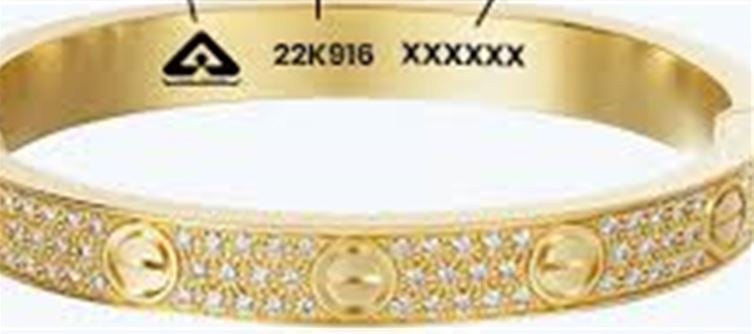
.jpg)
As the festive season approaches, particularly with Diwali just around the corner, buying jewelry becomes an important part of the celebrations. However, with the growing demand for gold and silver, there are increasing concerns about fake hallmarks and counterfeit jewelry. How can you ensure that the jewelry you're purchasing is genuine and not a scam? Don’t worry! Here are easy steps to check if the hallmark on your jewelry is authentic, all from the comfort of your home.
1. Understanding Hallmarks and Why They Matter
The hallmark is an official stamp that certifies the purity of the metal used in your jewelry. It assures customers that the jewelry has met the standards set by the Bureau of indian Standards (BIS). It typically includes:
· BIS logo.
· Purity grade (e.g., 22K, 24K).
· Assay center’s identification mark.
· Year of hallmarking.
This stamp is a vital part of ensuring that you're getting the right value for your jewelry.
2. Use the BIS Care App for Instant Verification
One of the easiest ways to verify your jewelry’s hallmark is by using the BIS Care App, launched by the Bureau of indian Standards. Here’s how:
· Download the app from the App Store or google Play.
· Scan the QR code or enter the hallmark details from the jewelry (like the BIS logo and the purity number).
· The app will confirm if the jewelry is BIS certified and whether the hallmark is legitimate.
This app provides an instant, reliable check from the palm of your hand!
3. Look for the Hologram or Laser Engraving
In addition to the traditional stamp, many jewelers use advanced techniques like holograms or laser engravings to authenticate their jewelry. These features are difficult to replicate. Check for:
· Holograms on the jewelry, which change their appearance depending on the angle.
· Laser engravings that display intricate designs or text, often difficult for counterfeiters to mimic.
4. Cross-check with the Jewelry’s Certificate
Authentic jewelers usually provide a certificate of authenticity along with the purchase. This document includes details such as:
· Purity of the metal.
· Weight and dimensions of the jewelry.
· BIS certification number.
Check the certificate with the hallmark on your jewelry. If the details match, it's a good sign of authenticity.
5. Use a Magnet Test for Gold
Gold is non-magnetic, so if your jewelry sticks to a magnet, it’s a red flag. While this test doesn’t verify the hallmark directly, it’s a quick way to check whether the jewelry contains base metals mixed in with the gold.
· Tip: This is more effective on gold jewelry. If the piece is magnetic, it’s likely not pure gold.
6. Compare with the Authorized Jewelers’ Hallmark
Many reputable jewelers are authorized to carry the BIS Hallmark. If you're unsure about the authenticity of the hallmark on your jewelry, compare it with the hallmark used by certified jewelers. You can check their official websites or visit their stores to get a clearer idea of how the mark should appear.
7. Get a Professional Appraisal
If you still have doubts about your jewelry's authenticity, consider getting it appraised by a BIS-certified jeweler or an expert. They can help confirm if your jewelry meets the required standards and whether the hallmark is genuine.
8. Trust Only Reputable Sellers
The best way to avoid fake hallmarks and fraudulent jewelry is to purchase your items from authorized and well-known jewelers. Established stores are more likely to provide authentic hallmarked jewelry, backed by proper certifications and warranty.
Conclusion: Don't Let Fake Hallmarks Ruin Your Diwali
As you purchase jewelry for the upcoming Diwali celebrations, it’s essential to stay informed about the authenticity of your precious metals. By using simple steps like checking with the BIS Care App, looking for laser engravings, and verifying your certificate, you can ensure that your jewelry is genuine and a true investment. This way, you can celebrate the festival of lights with confidence, knowing your gold and silver are real!
Disclaimer:
The views and opinions expressed in this article are those of the author and do not necessarily reflect the official policy or position of any agency, organization, employer, or company. All information provided is for general informational purposes only. While every effort has been made to ensure accuracy, we make no representations or warranties of any kind, express or implied, about the completeness, reliability, or suitability of the information contained herein. Readers are advised to verify facts and seek professional advice where necessary. Any reliance placed on such information is strictly at the reader’s own risk.




 click and follow Indiaherald WhatsApp channel
click and follow Indiaherald WhatsApp channel